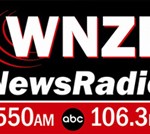
To include your event in the Briefing and Live Calendar, please fill out this form.
Weather: Mostly sunny. Highs in the mid 90s. West winds 5 to 10 mph. Saturday Night: Mostly clear in the evening, then becoming partly cloudy. Lows in the upper 60s.
- Daily weather briefing from the National Weather Service in Jacksonville here.
- Drought conditions here. (What is the Keetch-Byram drought index?).
- Check today’s tides in Daytona Beach (a few minutes off from Flagler Beach) here.
- Tropical cyclone activity here, and even more details here.
Today at a Glance:
The third annual Hang 8 Dog Surfing Competition in Flagler Beach is from 8 a.m. to 2 p.m., at the South 5th Street walkover off of State Road A1A just south of the Flagler Beach pier. Registration for dog surfing is $20, registration for the costume contest is $10. All proceeds go to charities. The awards ceremony is at 1 p.m. You can register your dog for the Hang 8 Dog Surfing competition at hang8dogsurfing.com. See: “Hang 8 Dog Surfing Contest Returns to Flagler Beach in All Its Ridiculous and Timely Exuberance.”
The Saturday Flagler Beach Farmers Market is scheduled for 9 a.m. to 1 p.m. today at Wickline Park, 315 South 7th Street, featuring prepared food, fruit, vegetables , handmade products and local arts from more than 30 local merchants. The market is hosted by Flagler Strong, a non-profit.
Flagler County Public Library Book and Bake Sale, 9:00 a.m. to 2:30 p.m. at the Flagler County Public Library, 2500 Palm Coast Pkwy NW, Palm Coast. Join us and browse the hard and soft-cover books, audio and video tapes, puzzles and a wonderful BAKE SALE! All at super-low bargain prices for the holidays. Stock up for the cold hard winter. Bring the kids, friends and neighbors. Pass the word!
Palm Coast Spring Arts Festival in Central Park: Palm Coast government and the Flagler County Cultural Council are hosting the Spring Arts Festival in Central Park in Town center from 10 a.m. to 3 p.m. It’s free. The focus is on local artists. The day will be filled with art, music, food, and fun. Regional artists and artisan crafters will showcase a variety of mediums. Entertainment will be provided by local musicians and a variety of tasty treats will be available to purchase from food trucks. Admission and parking are free, so come out, explore, and support the talented artisans who make Flagler County a more colorful and connected place. Enjoy music by Planet e Studios and the Palm Coast Community Band.
Coffee With Commissioner Scott Spradley has been on a hiatus pending the completion of construction on South Central Avenue.
Democratic Women’s Club of Flagler County meeting at 9:30 a.m. at the Palm Coast Community Center, 305 Palm Coast Parkway NE.
Swing Through the Years Dinner Dance Benefit for St. Thomas Episcopal Church, 6 p.m. at St. Thomas Episcopal Church, 5400 Belle Terre Parkway. Join us for an unforgettable evening filled with delicious food and captivating music, all for a great cause. The fundraising event features the Pat d’Aguanno Jazz Quintet with food provided by award-winning RPS Catering of Ormond Beach. Tickets include entertainment, dinner, dessert, and soft drinks. A cash bar will be available for beer and wine. Additionally, a silent auction will be held, offering everyone the opportunity to bid on a variety of exciting items. Tickets are $50 and can be purchased after each Sunday service, from the church office, or by contacting Jodie at 386-517-8725 or Tom at 954-309-7836. The church office can be reached at 386-446-2300 or visit our website at stechurch.org.
Random Acts of Insanity’s Roundup of Standups from Around Central Florida, 8 p.m. at Cinematique Theater, 242 South Beach Street, Daytona Beach. General admission is $8.50. Every third Saturday RAI hosts Live Standup Comedy with comics from all over Central Florida.
Grace Community Food Pantry, 245 Education Way, Bunnell, drive-thru open today from 10 a.m. to 1 p.m. The food pantry is organized by Pastor Charles Silano and Grace Community Food Pantry, a Disaster Relief Agency in Flagler County. Feeding Northeast Florida helps local children and families, seniors and active and retired military members who struggle to put food on the table. Working with local grocery stores, manufacturers, and farms we rescue high-quality food that would normally be wasted and transform it into meals for those in need. The Flagler County School District provides space for much of the food pantry storage and operations. Call 386-586-2653 to help, volunteer or donate.
Notably: It is quite notable, I think, that until March 30, 1981, some 70 days into Ronald Reagan’s first term, his massive first tax cut–the voodoo tax cut that would reduce the top income tax rate from 70 percent to 28 percent on the assumption that it would end up raising revenue thanks to “trickle-down” windfalls, when it cost the federal government $1.8 trillion over eight years and tripled the federal debt–had no chance of passing with a Democratic Senate and House. Dan Rostenkowski, the Democratic chairman of the House Ways and Means Committee, had said so. Then John Hinkley shot Reagan, ostensibly because he wanted to impress Jodie Foster. Reagan had just delivered a speech to thousands of union members at a Washington Hilton. He also shot Jim Brady, who never walked again and died years later from the wound, Thomas Delhanty, a police officer, and Tim McCarthy, a Secret Service agent who threw himself between Hinkley and the president. Reagan almost died. The story told the press at the time was mostly bullshit. The bullet had come within an inch of his heart, he’d lose half his blood, and doctors for hours were genuinely worried they’d lose him. But optimism can work wonders, and if nothing else–and really, as Margaret Thatcher once said after speaking to him, pointing a finger at her head, “there’s nothing there”–Reagan’s cheer was superhuman. He never lost that cheer during the ordeal: the one liners he came off with (“I forgot to duck,” that one cribbed from a movie, or, what he told a nurse as he lay bleeding: “Does Nancy know about us?”) were real. I’ve never liked Reagan, but as one get to know his charms, liking him is easy, at least in silos. The rest of him is another story. And after that assassination attempt and the sort of recovery he showed the country, there was no chance that Congress would not pass his tax bill. It was messy, ugly, irresponsible as hell and ruinous. But on July 29, 1981, it passed it, in a 238-195 vote in the House, with 48 Democrats joining the minority Republicans to do it, and an 89-11 vote in the Senate. It was, in truth, the John Hinkley Tax Bill.
—P.T.
View this profile on Instagram
![]()
The Live Calendar is a compendium of local and regional political, civic and cultural events. You can input your own calendar events directly onto the site as you wish them to appear (pending approval of course). To include your event in the Live Calendar, please fill out this form.
December 2025
Holiday Plant Class Series
Flagler Beach United Methodist Church Food Pantry
Flagler County Drug Court Convenes
Story Time for Preschoolers at Flagler Beach Public Library
Model Yacht Club Races at the Pond in Palm Coast’s Town Center
Nexus Center Grand Opening Ribbon Cutting and Gala
Rotary’s Fantasy Lights Festival in Palm Coast’s Town Center
Irving Berlin’s Holiday Inn
Florida Ethics Commission Meeting
Free For All Fridays With Host David Ayres on WNZF
First Friday Garden Walks at Washington Oaks Gardens State Park
Holiday Sale to Benefit Area Homeless
Friday Blue Forum
Santa in Bunnell
First Friday in Flagler Beach
For the full calendar, go here.

–From Max Boot’s Reagan: His Life and Legend (2024).













































Laurel says
Both of them sleep fine as neither has a conscience.
Pogo says
@P.T.
“… It was, in truth, the John Hinkley Tax Bill.” Bullseye (pun intended).
And so it goes
https://www.google.com/search?q=Gavrilo+Princip
Ray W, says
Thank you, Mr. Tristam, for directing a measure of focus on the low level of U.S. federal debt when Reagan took office, and its inexorable rise ever since.
Yesterday, the final independent arbiter of credit ratings, Moody’s, lowered its credit rating for the U.S. from the highest rating possible, unbroken since it was first established in 1949, to the second-highest possible rating, citing the sizes of both the federal debt and the federal deficit as the main reasons for the downrating.
As foundation for this comment, between 1959 and 1961, the federal debt grew by $4 billion, a deficit of just over $1 billion per year. The next time of sustained comparatively slow debt growth occurred between 1996-2001, when debt growth averaged $116.4 billion per year.
At the end of 1980, after just under 200 years of nationhood, the total U.S. federal debt was $908 billion; it comprised 32% of GDP, which has long been a standard economic measure. Over its first 192 years of liberal democratic Constitutional republic governance based on checks and balances, the country survived multiple wars, including a Civil War, and multiple economic upheavals, including a Great Depression, yet its overall federal debt was still under $1 trillion. Something obviously was keeping federal spending under control.
In decades since 1980, the federal debt has grown to over $38 trillion.
Clearly, the way the American political class of both parties looks at the federal debt has changed.
At the end of 1988, the U.S. federal debt was $2.602 trillion, nearly triple that of eight years earlier; it comprised 50% of GDP.
At the end of 1992, the U.S. federal debt was $4.065 trillion; it comprised 61% of GDP.
Again, can it be legitimately argued that a bipartisan shift in political thought about national debt occurred during this 12-year span, a shift in political thought that arguably persists today.
The site I accessed for debt and deficit and ratio compared to GDP ends in 2023, arguably the last year for which reliable economic data has been collected sufficient to determine the actual level of U.S. debt. In 2023, the federal debt was $34.001 trillion, which amount comprised 122% of GDP.
Since 1981, the only sustained times that the debt to GDP ratio dropped was 2021 and 2022, just after the 2020’s pandemic and resulting recession, and 1997 to 2001, a few years after George H. W. Bush famously raised taxes.
With all the stimulus money spending signed into law by President Trump in 2020, the debt to GDP ratio soared to 129% from 107% in 2019. GDP dropped due to the recession, which affected the ratio to debt, but with the amount of unfunded stimulus money that Trump spent in 2020 being unprecedented, the debt skyrocketed by just over $5 trillion in just one year, and the debt to GDP ratio rose from aforementioned 107% in 2019 to the aforementioned 129% in 2020.
Between 1997 and 2000, the tail-end years of the two Clinton administrations and the first year of W’s first administration, while overall federal debt rose, albeit very, very slowly, the ratio of debt to GDP dropped from 64% to 55%.
Some economists argue that the first Bush presidency’s tax increase provided a framework of stability that permitted the Clinton presidency the opportunity to run a policy program that saw wealth created in large amounts, jobs created in historic numbers, extraordinary stock valuation increases, and an overall healthy set of economic conditions.
The economic argument is simple: Since businesses crave stability over chaos, and since a balanced tax rate is better for stability than is an unbalanced tax rate, then the higher taxes imposed by the first Bush created a more balanced tax rate, compared to the Reagan era. The stability offered by the more balanced tax rate triggered the Clinton administration years of unusually strong growth. It wasn’t that Clinton did anything; it was that the Bush tax increase made more likely the strong Clinton growth years.
In other words, the argument posits that when Reagan cut the highest tax rate from 70% to 28%, he took taxes from an economically unbalanced too high tax rate to an economically unbalanced too low tax rate. Bush simply brought the too low Reagan tax rate to a more balanced rate.
Yes, the Reagan economy took off when taxes dropped, but the level of federal debt skyrocketed, taking the debt side of the economy out of balance. When Bush, after seeing 10 years of unheard-of peacetime federal deficits, raised taxes to a healthier economic balance, the economy took off even faster, but the deficit and, concurrently, the debt, rises plateaued.
Accordingly, when George W. Bush took office eight years after his father left office, inheriting a balanced budget and years of strong economic growth, his tax cut again unbalanced the federal economy. Economic growth struggled, job growth struggled, stock valuations struggled, and the federal deficit again skyrocketed. Overall federal debt rose from $5.674 trillion at the end of 2000 to $10.025 trillion at the end of 2008.
And, no, I haven’t forgotten the tech sector market collapse of the latter Clinton years, purportedly caused by overenthusiastic investors creating an investment bubble.
And we have never since looked back at the five years of a balanced budget. High deficits and a rapidly rising federal debt have been the norm since 2001. Yes, between 2014 and 2015, the deficit dropped to $422 billion, but it didn’t last. Obama oversaw a $9 trillion rise in debt, Trump another $8 trillion and Biden another $8 trillion.
Ray W, says
As an aside, in 1932 the federal debt to GDP ratio was 34%. It peaked at 119% in 1945. It finally dropped below 34% in 1973 and stayed at or below 34% (as low as 31% in 1974 and 1980) until 1983 when America went to the spending races.
Pogo says
@No surprise
Things of a kind
https://www.google.com/search?q=Glen+Rogers+praises+Trump
On his way now, to Qatar-A-Lago and a place in the bathroom hall of records, er uh, the throne, seat of power, trump’s charging station.
Ray W, says
According to a CNBC reporter, Moody’s Ratings first assigned a “country ceiling rating” of Aaa for U.S. bonds in 1949; it “officially” rated the U.S. bond market at Aaa in 1993.
For the first time, at least since 1993 when the rating became official, Moody’s Rating lowered its rating for U.S. bonds yesterday after the close of the U.S. markets to the second highest rating: Aa1.
Fred Hickey, editor of The High-Tech Strategist posted to X: “This will make next week interesting.” He expects the price of gold to rise and the strength of the dollar to fall. Bond values should fall, too (this means bond yields should rise).
Fitch Ratings cut its U.S. bond rating to AA+ from the highest AAA rating in August 2023.
Standard & Poor cut its U.S. bond rating to AA+ from the highest AAA rating in 2011.
Analysts with Moody’s issued a statement:
“Successive U.S. administrations and Congress have failed to agree on measures to reverse the trend of large annual fiscal deficits and growing interest costs. … We do not believe that material multi-year reductions in mandatory spending and deficits will result from current fiscal proposals under consideration.”
The statement continues:
“If the 2017 Tax Cuts and Jobs Act is extended, which is our base case, it will add around $4 trillion to the federal fiscal primary (excluding interest payments) deficit over the next decade. … As a result, we expect federal deficits to widen, reaching nearly 9% of GDP by 2035, up from 6.4% in 2024, driven mainly by increased interest payments on debt, rising entitlement spending and relatively low revenue generation. … We anticipate that the federal debt burden will rise to about 134% of GDP by 2035, compared to 98% in 2024.”
In a different section of the statement, Moody’s analysts compared U.S. debt to that of other comparable nations:
“This one-notch downgrade on our 21-notch rating scale reflects the increase over more than a decade in government debt and interest payment ratios to levels that are significantly higher than similarly rated sovereigns.”
Bleakly Financial Group’s chief investment officer, Peter Boockvar, told CNBC:
“Treasuries are still dealing with the fundamental factor of less foreign demand for them and the growing size of the pile of debt that needs to be constantly refinanced is not going to change, but [Moody’s] is symbolic in the sense that here’s a major rating agency that’s calling out that the U.S. has strained debts and deficits.”
The CNBC reporter wrote:
“In early April, Treasury yields rose and the dollar weakened against its global counterparts in reaction to Trump imposing high tariffs on imported goods coming into the U.S., a sign that investors could be starting to move away from the U.S. as the safest place in the world to invest.”
Make of this what you will.
Me?
Fed Chair Powell has for some time been telling those who would listen that there would come a time when the level of American federal debt would become “unsustainable.”
I am not saying now is that time, but with the dollar weakening in value against a basket of foreign currencies, and with more and more long-term U.S. Treasuries bills having to be refinanced at today’s higher bond yields, and with new debt having to be sold to investors at higher bond yields, we are inexorably moving towards an economic status where more and more of the country’s revenue will be devoted to paying for the debt we currently have.
Let’s face it. There was about a decade in the 2010s when whatever old Treasury bond debt needed to be refinanced and when whatever new Treasury bond debt needed to be sold, the interest yields on the bonds of either type of transactions occurred were below historical averages. As an example, the debt we refinanced in 2015 through 10-year Treasuries at less than 2% is now being refinanced in 2025 at a yield of well over 4%. The national average yield for our $36 trillion in debt is 3.2%. Other nations and multiple foreign institutional investors were willing to buy U.S. debt at low rates because the dollar was considered safe. What happens when the average yield on the debt rises to over 4% and foreign nations and institutional investors move on to other currencies? Is this what Powell deemed as an “unsustainable” circumstance?